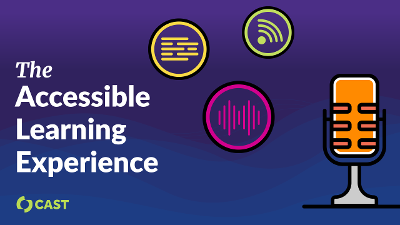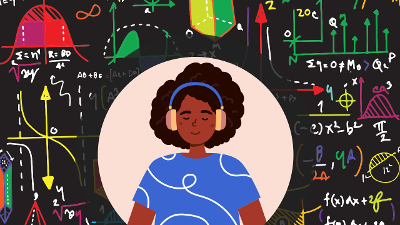Showing results 141-150 of 226 for Materials Accessibility
Search results
-
Webinar

3:00PM – 4:00PM ET on Tuesday, March 26, 2019
Join a discussion with AEM leaders from Florida and Indiana about strategies for collecting and using data on student use of accessible educational materials (AEM). What information is most relevant? How are data collected and tracked? How do you know if AEM is being used effectively? To get the most out of the webinar, please review AEM Quality Indicators 5 and 6 ahead of time. And because the process of providing AEM requires collaboration, gather your colleagues to watch the webinar together!target audience? To get the most out of the webinar, please review AEM Quality Indicator 4 ahead of time. And because the process of providing AEM requires collaboration, gather your colleagues to watch the webinar together!
-
Podcast

National AEM Center at CAST, 2022
Are using assistive technologies and accessible educational materials cheating? Find out in our season two opener.
-
Podcast
National AEM Center at CAST, 2024
In April 2024, the United States Department of Justice issued a final rule requiring state and local governmental entities — including early childhood, elementary, secondary, and postsecondary institutions — to ensure web or mobile app-based digital learning resources are appropriate for and usable by students with disabilities.
-
Webinar

3:00PM – 4:00PM ET on Thursday, April 29, 2021
Join us for an updated overview of the team decision-making process for providing accessible formats for students who need them.
-
Presentation

12:45PM – 3:00PM ET on Thursday, November 3, 2022
Participants will be provided with supporting resources and action steps to be prepared for their next IEP meeting.
-
Webinar

2:00PM – 3:00PM ET on Tuesday, June 11, 2019
A Voluntary Product Accessibility Template (VPAT) is meant to provide a standard format for vendors to report the extent to which a digital material or technology product meets accessibility standards. Despite recent updates meant to streamline the VPAT and make it easier to use, the VPAT remains a highly technical document. In this webinar, we will discuss the benefits and limitations of the VPAT and then walk you through an exemplar VPAT as we provide tips for what to look for in each section when interpreting a VPAT from a vendor.
-
Article
AEM Center at CAST, 2024
This publication explores the innovative potential of generative AI in enhancing educational accessibility and engagement. Despite its promise, the adoption of AI in education faces significant hurdles due to the lack of clear guidance and understanding within educational districts.
-
Presentation

4:00PM – 5:00PM ET on Wednesday, May 20, 2020
In this presentation, participants will dive into the three core principles of UDL: multiple means of engagement, representation and action and expression. Examples for addressing each principle through the intentional design of accessible educational materials will be provided, along with a range of AEM Center and CAST resources that education professionals can use to continue their own learning on UDL and AEM and create professional development opportunities for others.
-

Given the rapid advancement of technology and the urgency of applying scientific solutions to global challenges, all learners need access to STEM education. Creating accessible materials is one way to reduce those barriers so that all learners can participate and choose to advance in STEM fields.
-

Discover how a teacher of students with visual impairments (TVI) negotiates and collaborates within a school system to support a student who uses accessible materials and assistive technology.
